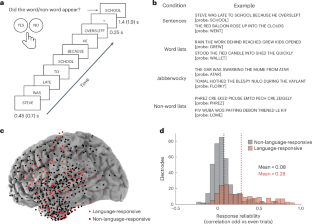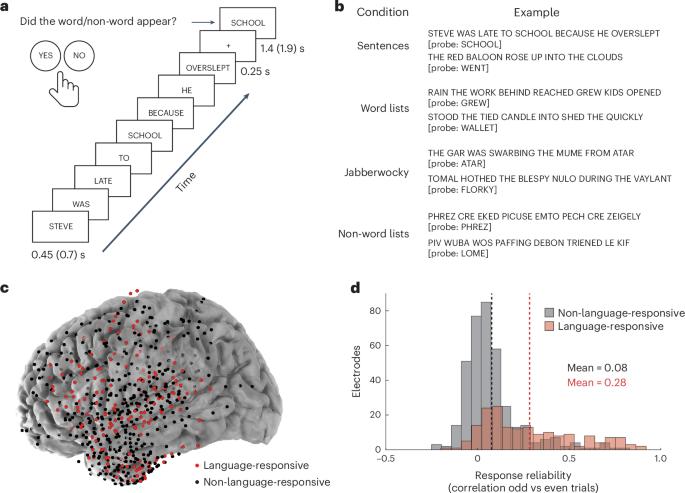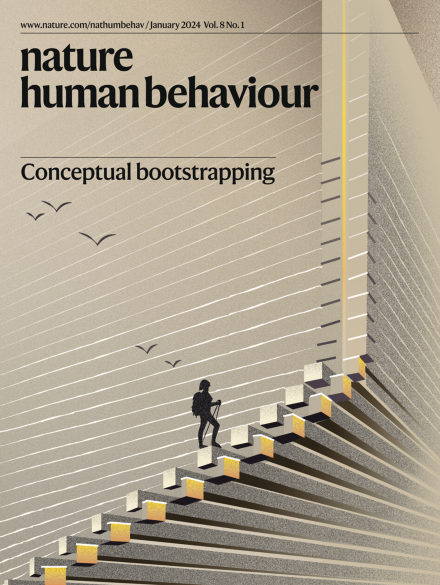语言网络中的神经群在时间感受窗的大小上存在差异。
IF 21.4
1区 心理学
Q1 MULTIDISCIPLINARY SCIENCES
引用次数: 0
摘要
尽管我们早就知道哪些脑区支持语言理解,但我们对这些额叶和颞叶区域所执行的神经计算的了解仍然有限。一个尚未解决的重要问题是组成语言网络的神经群之间的功能差异。在这里,我们利用人类颅内记录(n = 22)的高时空分辨率来研究对句子和语言退化条件的反应。我们发现了三种不同时间动态的反应特征。这些特征似乎反映了不同的时间接受窗口,平均窗口分别约为 1、4 和 6 个单词。表现出这些特征的神经群在整个语言网络中交错分布,这表明所有语言区域都能直接访问不同的、多尺度的语言输入表征--这一特性可能对语言处理的效率和稳健性至关重要。本文章由计算机程序翻译,如有差异,请以英文原文为准。


Neural populations in the language network differ in the size of their temporal receptive windows
Despite long knowing what brain areas support language comprehension, our knowledge of the neural computations that these frontal and temporal regions implement remains limited. One important unresolved question concerns functional differences among the neural populations that comprise the language network. Here we leveraged the high spatiotemporal resolution of human intracranial recordings (n = 22) to examine responses to sentences and linguistically degraded conditions. We discovered three response profiles that differ in their temporal dynamics. These profiles appear to reflect different temporal receptive windows, with average windows of about 1, 4 and 6 words, respectively. Neural populations exhibiting these profiles are interleaved across the language network, which suggests that all language regions have direct access to distinct, multiscale representations of linguistic input—a property that may be critical for the efficiency and robustness of language processing. Regev, Casto et al. examine the temporal response patterns of neural populations in the language network and discover that these populations process information over different timescales.
求助全文
通过发布文献求助,成功后即可免费获取论文全文。
去求助
来源期刊

Nature Human Behaviour
Psychology-Social Psychology
CiteScore
36.80
自引率
1.00%
发文量
227
期刊介绍:
Nature Human Behaviour is a journal that focuses on publishing research of outstanding significance into any aspect of human behavior.The research can cover various areas such as psychological, biological, and social bases of human behavior.It also includes the study of origins, development, and disorders related to human behavior.The primary aim of the journal is to increase the visibility of research in the field and enhance its societal reach and impact.
 求助内容:
求助内容: 应助结果提醒方式:
应助结果提醒方式:


